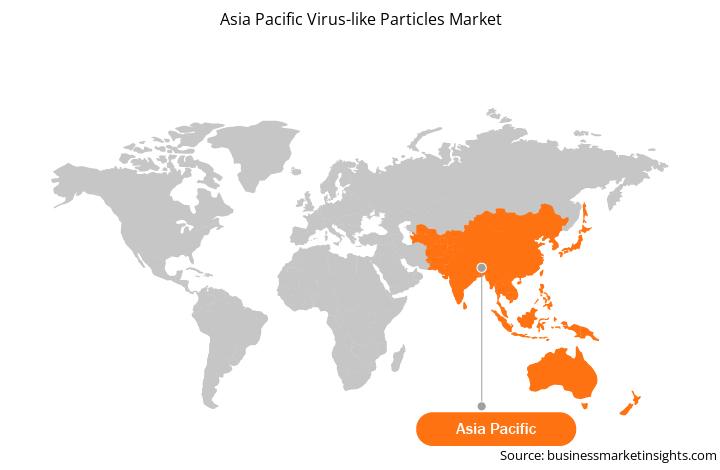2028年までのアジア太平洋地域のウイルス様粒子市場予測 - 製品タイプ別(肝炎、がん/HPV、ゴーシェ病)、発生源(酵母、昆虫細胞、植物など)、用途別(ワクチン)による新型コロナウイルス感染症の影響と地域分析および治療)
No. of Pages: 125 | Report Code: TIPRE00026817 | Category: Life Sciences
No. of Pages: 125 | Report Code: TIPRE00026817 | Category: Life Sciences
国際通貨基金 (IMF) の報告書によると、 , アジア太平洋地域の成長は、2020年もゼロパーセントで停滞すると予想されていた。これは、世界金融危機(4.7%)とアジア金融危機(1.3%)を伴う約60年間で最悪の成長実績となった。韓国の場合は3.5%から下方修正が大幅にあったが、オーストラリア、ニュージーランド、タイでは9%を占める長期にわたる生産停止が最小限に抑えられたため、コロナウイルスの緩やかな感染拡大になんとか対処しているようだ。これらの国は世界的な観光業の停止と、オーストラリアの場合は一次産品価格の下落により大きな打撃を受けた。現在、新型コロナウイルス感染症ワクチンの開発が進められているアジア太平洋地域には、韓国、中国、日本、タイ、ベトナムが含まれる。このうち中国は15種類、インドと韓国は3種類、日本は2種類、タイとベトナムは1種類のワクチンを保有している。これらのワクチンの中には、10 種類の不活化ワクチン、6 種類のタンパク質サブユニットワクチン、7 種類のウイルスベクターワクチン、および 6 種類の核酸ワクチンが含まれます。さらに、安全で公平かつ効果的なワクチンの推進は、アジア太平洋地域における最優先事項です。アジア開発銀行の報告書によると、2020年12月、アジア開発銀行(ADB)はアジア太平洋ワクチンアクセスファシリティ(APVAX)と共同で90億ドル規模のワクチン構想を立ち上げ、発展途上の加盟国に迅速かつ公平な支援を提供することになった。各国(DMC)が効果的で安全な新型コロナウイルス感染症ワクチンを調達し、提供することを目的としています。ワクチン接種を通じて、ウイルス感染の連鎖を断ち切り、命を救い、パンデミックによる悪影響を軽減することができます。
機能やテクノロジーを活用することで、ベンダーは新規顧客を獲得し、新興市場での拠点を拡大することができます。この要因は、アジア太平洋地域のウイルス様粒子市場を牽引する可能性があります。アジア太平洋地域のウイルス様粒子市場は、予測期間中に良好な CAGR で成長すると予想されます。
アジア太平洋地域のウイルス様粒子市場 –言及された企業
Strategic insights for Asia Pacific Virus-like Particles involve closely monitoring industry trends, consumer behaviours, and competitor actions to identify opportunities for growth. By leveraging data analytics, businesses can anticipate market shifts and make informed decisions that align with evolving customer needs. Understanding these dynamics helps companies adjust their strategies proactively, enhance customer engagement, and strengthen their competitive edge. Building strong relationships with stakeholders and staying agile in response to changes ensures long-term success in any market.

| Report Attribute | Details |
|---|---|
| Market size in 2021 | US$ 1,018.83 Million |
| Market Size by 2028 | US$ 1,769.02 Million |
| Global CAGR (2021 - 2028) | 8.2% |
| Historical Data | 2019-2020 |
| Forecast period | 2022-2028 |
| Segments Covered |
By 製品タイプ
|
| Regions and Countries Covered | アジア太平洋
|
| Market leaders and key company profiles |
The regional scope of Asia Pacific Virus-like Particles refers to the geographical area in which a business operates and competes. Understanding regional nuances, such as local consumer preferences, economic conditions, and regulatory environments, is crucial for tailoring strategies to specific markets. Businesses can expand their reach by identifying underserved regions or adapting their offerings to meet regional demands. A clear regional focus allows for more effective resource allocation, targeted marketing, and better positioning against local competitors, ultimately driving growth in those specific areas.

The Asia Pacific Virus-like Particles Market is valued at US$ 1,018.83 Million in 2021, it is projected to reach US$ 1,769.02 Million by 2028.
As per our report Asia Pacific Virus-like Particles Market, the market size is valued at US$ 1,018.83 Million in 2021, projecting it to reach US$ 1,769.02 Million by 2028. This translates to a CAGR of approximately 8.2% during the forecast period.
The Asia Pacific Virus-like Particles Market report typically cover these key segments-
The historic period, base year, and forecast period can vary slightly depending on the specific market research report. However, for the Asia Pacific Virus-like Particles Market report:
The Asia Pacific Virus-like Particles Market is populated by several key players, each contributing to its growth and innovation. Some of the major players include:
The Asia Pacific Virus-like Particles Market report is valuable for diverse stakeholders, including:
Essentially, anyone involved in or considering involvement in the Asia Pacific Virus-like Particles Market value chain can benefit from the information contained in a comprehensive market report.